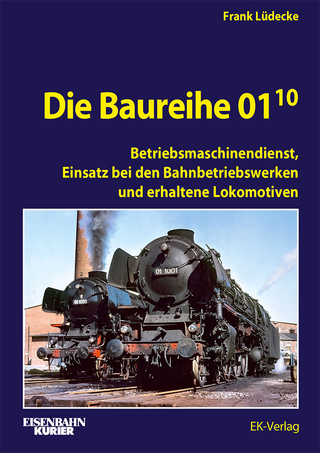
British Industrial Railways
1960s-1980s
Seiten
2023
Amberley Publishing (Verlag)
978-1-3981-1194-3 (ISBN)
Amberley Publishing (Verlag)
978-1-3981-1194-3 (ISBN)
A superb photographic survey of the industrial railway scene in Britain throughout the 1960s and 1980s.
The earliest railways were built for industrial uses, coal being the principal commodity carried, perhaps from the pit to a dockside or canal for onward transport. After the passenger railway came onto the scene, industrial railways continued in operation, but largely as separate entities. Operation within the private works was by locomotives designed and built by the organisation concerned, which was also responsible for their maintenance and that of the track.
This book illustrates many of the systems to be found around Britain in the 1960s, 1970s, and 1980s, many no longer in existence. Traction was mostly steam, but also fireless, electric and diesel. These were the products of Andrew Barclay, Hunslet, Peckett and many other companies and included the wartime Austerity 0-6-0T steam locomotives, which in post-war Britain were often deemed surplus to requirements. A principal operator was the National Coal Board, nationalised in 1947, which often needed to move coal from pit head to washery before its despatch. Other users were quarries, paper mills, breweries and so on. Another user was the Army, notably for its Longmoor Military Railway. Other uses were the engineering trains of British Railways and London Underground. Not all were on standard gauge; that at Bowaters’ in Kent being a notable example. Starting with the Talyllyn in 1952, some of the Welsh narrow gauge slate railways survived into preservation and a few of these are represented here.
With an array of superb photographs, John Glover presents a fascinating overview of the industrial railway scene in Britain in this period.
The earliest railways were built for industrial uses, coal being the principal commodity carried, perhaps from the pit to a dockside or canal for onward transport. After the passenger railway came onto the scene, industrial railways continued in operation, but largely as separate entities. Operation within the private works was by locomotives designed and built by the organisation concerned, which was also responsible for their maintenance and that of the track.
This book illustrates many of the systems to be found around Britain in the 1960s, 1970s, and 1980s, many no longer in existence. Traction was mostly steam, but also fireless, electric and diesel. These were the products of Andrew Barclay, Hunslet, Peckett and many other companies and included the wartime Austerity 0-6-0T steam locomotives, which in post-war Britain were often deemed surplus to requirements. A principal operator was the National Coal Board, nationalised in 1947, which often needed to move coal from pit head to washery before its despatch. Other users were quarries, paper mills, breweries and so on. Another user was the Army, notably for its Longmoor Military Railway. Other uses were the engineering trains of British Railways and London Underground. Not all were on standard gauge; that at Bowaters’ in Kent being a notable example. Starting with the Talyllyn in 1952, some of the Welsh narrow gauge slate railways survived into preservation and a few of these are represented here.
With an array of superb photographs, John Glover presents a fascinating overview of the industrial railway scene in Britain in this period.
John Glover is a transport professional who has worked in the industry for over 40 years. His prime interests are in rail, and he is active in many professional institutions as well as being an examiner for the Chartered Institute of Logistics and Transport. A social scientist by training, he has held managerial positions in the rail industry and in local government. Author of over 30 books and numerous magazine articles, he has studied railways both at home and overseas, particularly in the London area.
| Erscheinungsdatum | 16.03.2023 |
|---|---|
| Zusatzinfo | 180 Illustrations |
| Verlagsort | Chalford |
| Sprache | englisch |
| Maße | 165 x 234 mm |
| Gewicht | 281 g |
| Themenwelt | Natur / Technik ► Fahrzeuge / Flugzeuge / Schiffe ► Schienenfahrzeuge |
| Geschichte ► Allgemeine Geschichte ► Zeitgeschichte | |
| ISBN-10 | 1-3981-1194-5 / 1398111945 |
| ISBN-13 | 978-1-3981-1194-3 / 9781398111943 |
| Zustand | Neuware |
| Haben Sie eine Frage zum Produkt? |
Mehr entdecken
aus dem Bereich
aus dem Bereich
die Rhätische Bahn schreibt Geschichte
Buch | Hardcover (2023)
Edition Somedia (Verlag)
CHF 63,90
St. Moritz – Zermatt : die Traumreise im langsamsten Schnellzug der …
Buch | Hardcover (2023)
Verlag Berg & Tal
CHF 25,90
Betriebsmaschinendienst, Einsatz bei den Bahnbetriebswerken und …
Buch | Hardcover (2024)
EK-Verlag
CHF 68,90


